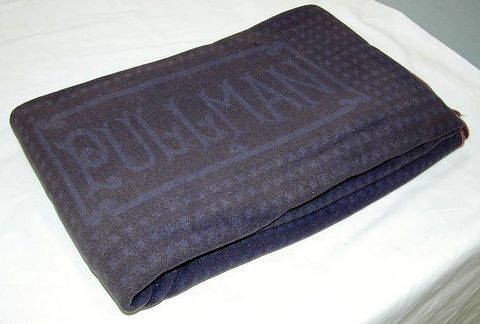Segregation in Tangible Form: the Pullman Blanket
Annotation
In the days before pervasive air travel and ubiquitous interstate highways, Americans traveled the nation via trains. Serving those travelers were tens of thousands of Pullman porters, most of them African Americans. It was a stable and prestigious job within the black community and it also nurtured black protest and black activism. In 1925, A. Philip Randolph founded the Brotherhood of Sleeping Car Porters, which had a major impact on American life as a successful union bargaining for the rights of its members, and as an important leader in the civil rights movement. During World War II, Randolph led successful efforts to end discrimination in the federal hiring. This tradition of activism and protest for equal treatment co-existed with the everyday patterns of racial inequality and segregation faced by the Pullman porters, as exemplified by this wool blanket used by the porters between the 1930s and the 1950s. Part of a Pullman porter's job was to make up the sleeping berths in his assigned sleeping car and to provide extra blankets (invariably dyed salmon) to passengers requesting them. When a blanket became worn or damaged in service, the company assigned them to the porters for their own use. In order to insure that the blankets used by porters and passengers never mixed, used blankets were dyed blue.

Source
Pullman Blanket Dyed Blue (Accession No. Accession #: 1986.0133), Smithsonian Institution. Gift of Arthur D. Dubin.